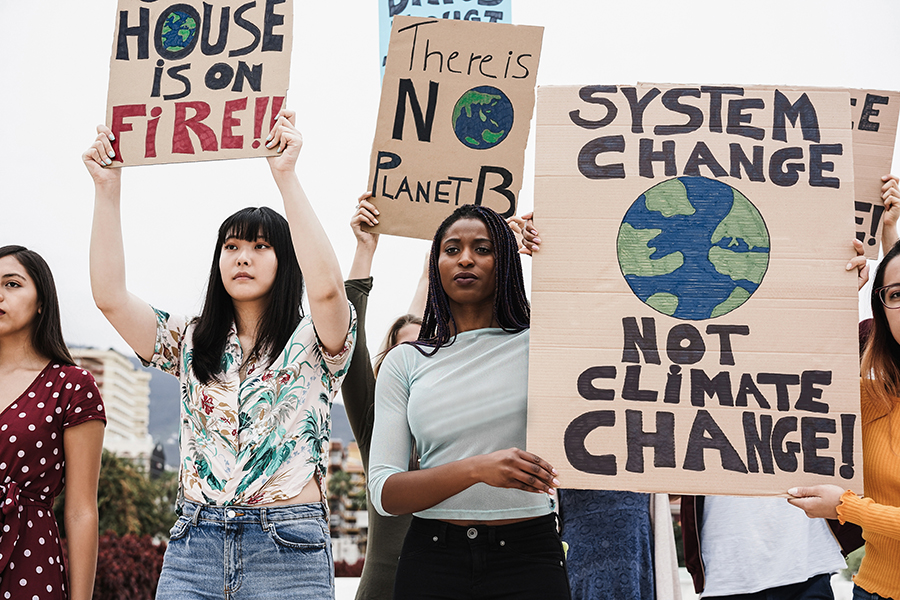Over 96% of scientists agree that climate change is caused by humans. It poses critical business risks such as breaks in the supply chain, customers who expect CEOs to address climate change, and activists in the investor circle advocating for CEO pay to be tied to climate change initiates.
However, the response among CEOs seem to be mixed. A Deloitte survey claims that about 80% of the surveyed CEOs indicate great concern with climate change issues. On the other hand, a PwC report suggests that climate change is still being played down by CEOs. In this survey, climate change came in at ninth on the list with only 30% of CEOs citing extreme concern and nearly 27% of CEOs report being ‘not concerned at all’ or ‘not very concerned about climate change and 60% of them have not factored climate change into their strategic risk management.
Individuals and organizations ignore the threat of climate change for a multitude of reasons. Still, they are all quintessentially human reasons – deep ideological polarization and identification with a particular community or group, sense of political identity rather than logic, our cognitive biases, distance and time horizons, and a sense of hopelessness with the doom message. How do we address this issue within organization and leadership development? While policy recommendations are crucial for incentivizing good behaviors and punishing bad behaviors, we also need to look at new solutions to shift people’s mental models and mindsets.
What can organizations do?
Help your employees and leaders develop ecologically embedded identities and a connection with the place. Positive meanings attributed to places keep people healthy. Ecological embeddedness is the connection to the physical land and development of beliefs with respect to ecological respect, caretaking, reciprocity, and being physically located and feeling connected in a place. Usually, this emotional connection to the land is preceded by one’s connection to the land through ties of family, history, ancestry, and shared memories. In a diasporic world, where many people do not end up where we were raised, it becomes important to cultivate it to wherever we are located now and to the planet at large.
Here are a few ideas on how this can be done.
- When you onboard people in a new location (or otherwise), provide them an opportunity to experience and learn about the socio-ecological history and the original inhabitants of the place.
- Begin meetings with a walk. Nature is us, and so a downtown city walk is as effective at cultivating a relationship with the place as going on a retreat to a distant location to experience ‘nature.’
- Many BIPOC organizations routinely begin their meetings with land acknowledgment. Like how using pronouns for self-introductions is slowly becoming the norm, land acknowledgment can also become normalized. For example, my primary home is in the land of Lenape (New York City), but I am writing this piece from the land of the Kumeyaay (San Diego).
Examine your business’s impact on both local (place-based) and planetary well-being. Pay attention to the margins the crucibles of bold innovation. Most of the important and interesting climate change advocacy and change works happens in places where most organizational leaders do not think to look and led by people who do not look like or come from most traditional organizational leaders. Lift up their work and invite them to teach about building effective organizations and strategies to promote living in harmony with nature. Here are a few examples of such innovative leaders and organizations.
- Tarun Bharat Sangh is a pioneering environmental movement organization that has built environmentally resilient rural communities for several decades.
- Shreya Ramachandran is a dear friend’s daughter who as a high school freshman founded the Grey Water Project in 2016 that has served over 50000 people.
- Elizabeth Yeampierre of Climate Justice Alliance is another role model who co-leads this grassroots movement working at the cusp of environmental and racial justice in the US towards a regenerative future.
- Selco Solar is a proven social venture in the sustainability space that has broken myths such as poor people cannot afford sustainable technologies, or poor people cannot maintain sustainable technologies. Through their business strategy that is not tied to endless growth and profits, this organization has demonstrated an impressive 20% annual growth with modest profits while scaling their impact to touch a million poor people.
As Elizabeth Yeampierre of Climate Justice Alliance also exhorts, don’t supplant these leaders from the margins when you adopt their ideas but lift them up to positions of leadership. Share power.
Help people develop cognitive flexibility, which is an individual’s cognizance of alternatives, willingness to adapt to the situation, and their belief in their own ability to be flexible. As a fellow CEO of a tech startup, I truly appreciate the pressure to focus on financial viability and growth. But we do not have to take a reductive approach of having to choose between financial sustainability and ESG dimensions. We can be bold enough to say No to limitless growth or profits that is predicated upon damaging our planetary health The ability to switch between different thoughts, and different actions is a key leadership capacity is a key capacity. Several validated scales are available for cognitive complexity, and you might want to check this one out. Complexity thinking is also crucial for long-term orientation that is essential in climate work.
Help people develop an agentic and empowered approach to dealing with climate change issues through positive framing. One of the under-estimated approaches to sustainability orientation is mindfulness and contemplative practice. While developing a sense of urgency around climate change is crucial, neurobiology says that people’s brains shut down under threat and fear. My graduate school professor, Dr. Richard Boyatzis, has done a lot of important work on this front. Research shows that Positive Emotional Attractors (PEA) engagement allows people to be open, triggers the parasympathetic nervous system, default mode network, and positive emotions allowing us to feel safe, be open to others, possibilities, and learning and growth. On the other hand, Negative Emotional Attractors (NEA) engages the sympathetic stress system, increases self-consciousness, engages a defensive posture leading to shutting down our openness to change, reducing our flexibility, and increasing our cognitive rigidity.




































